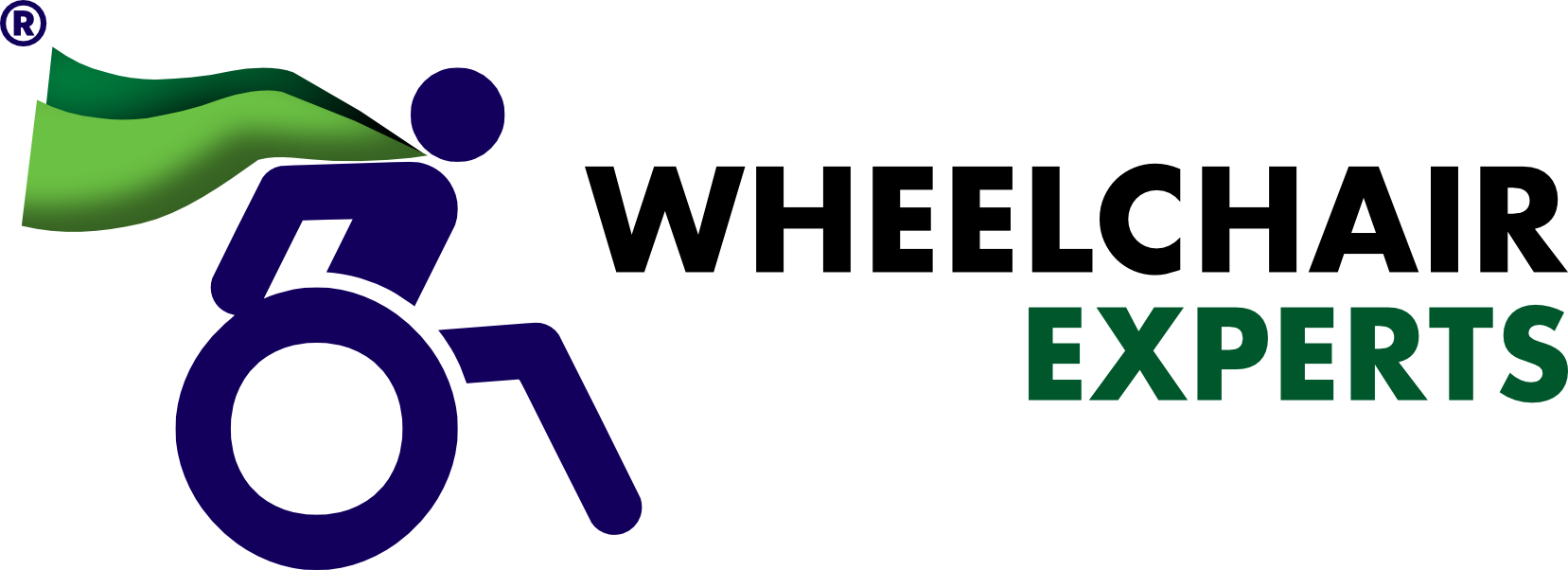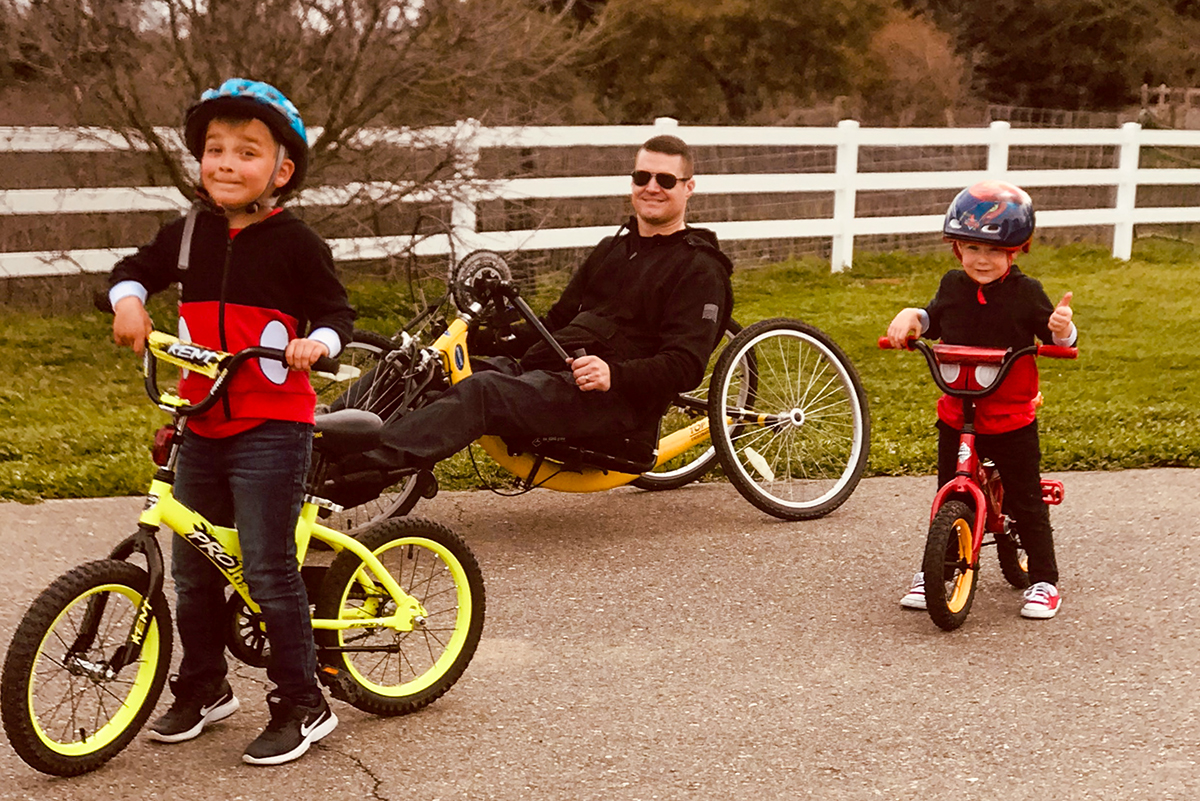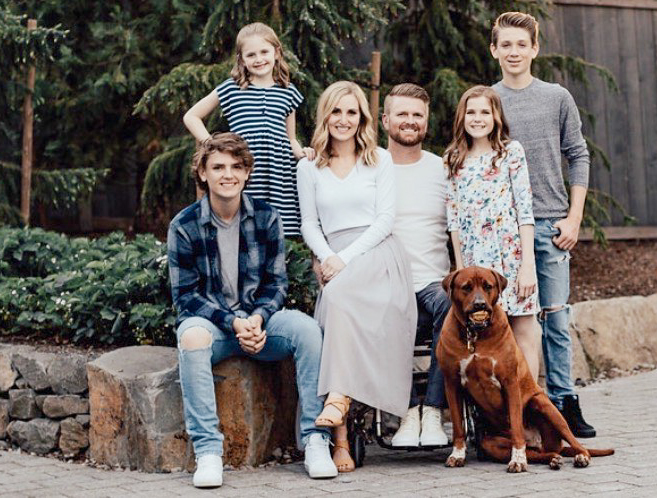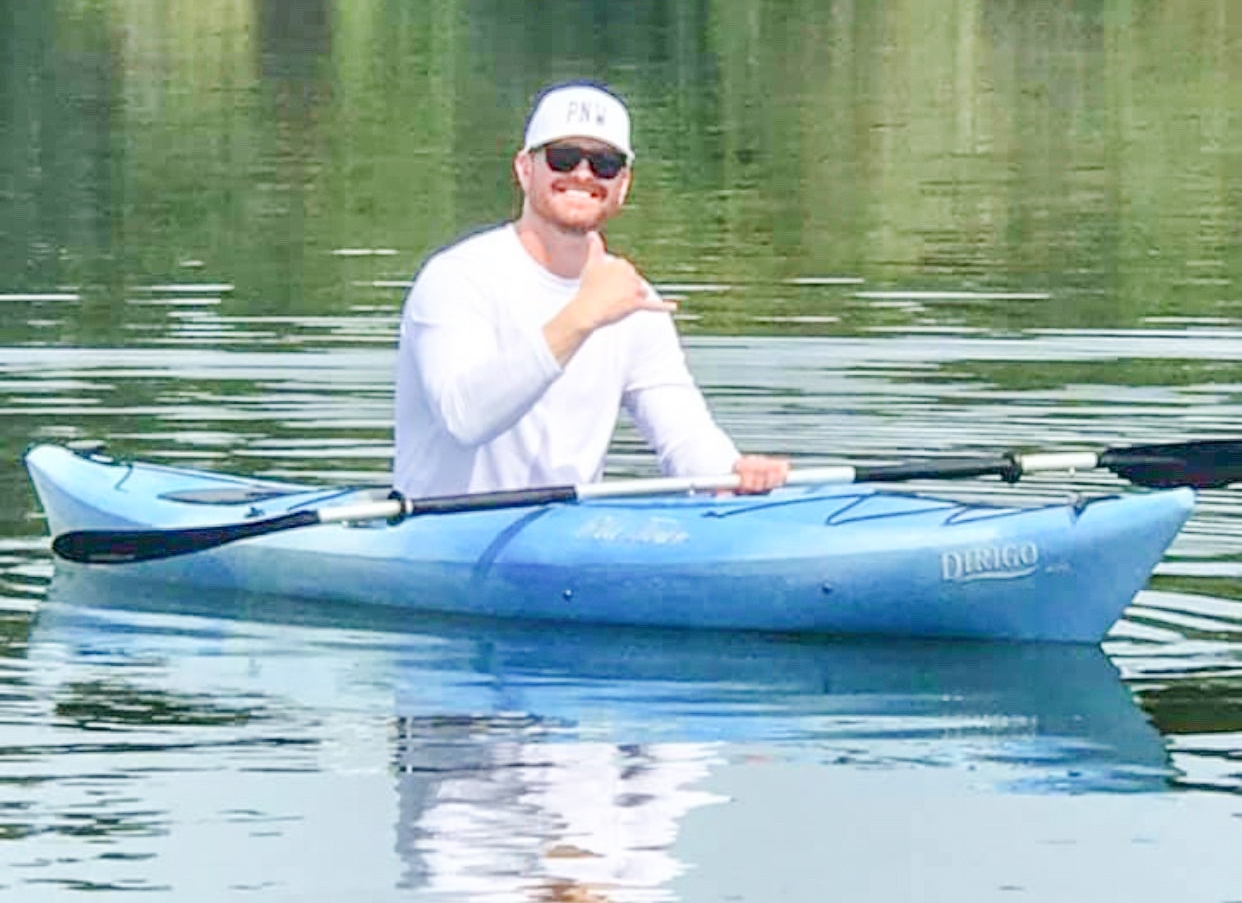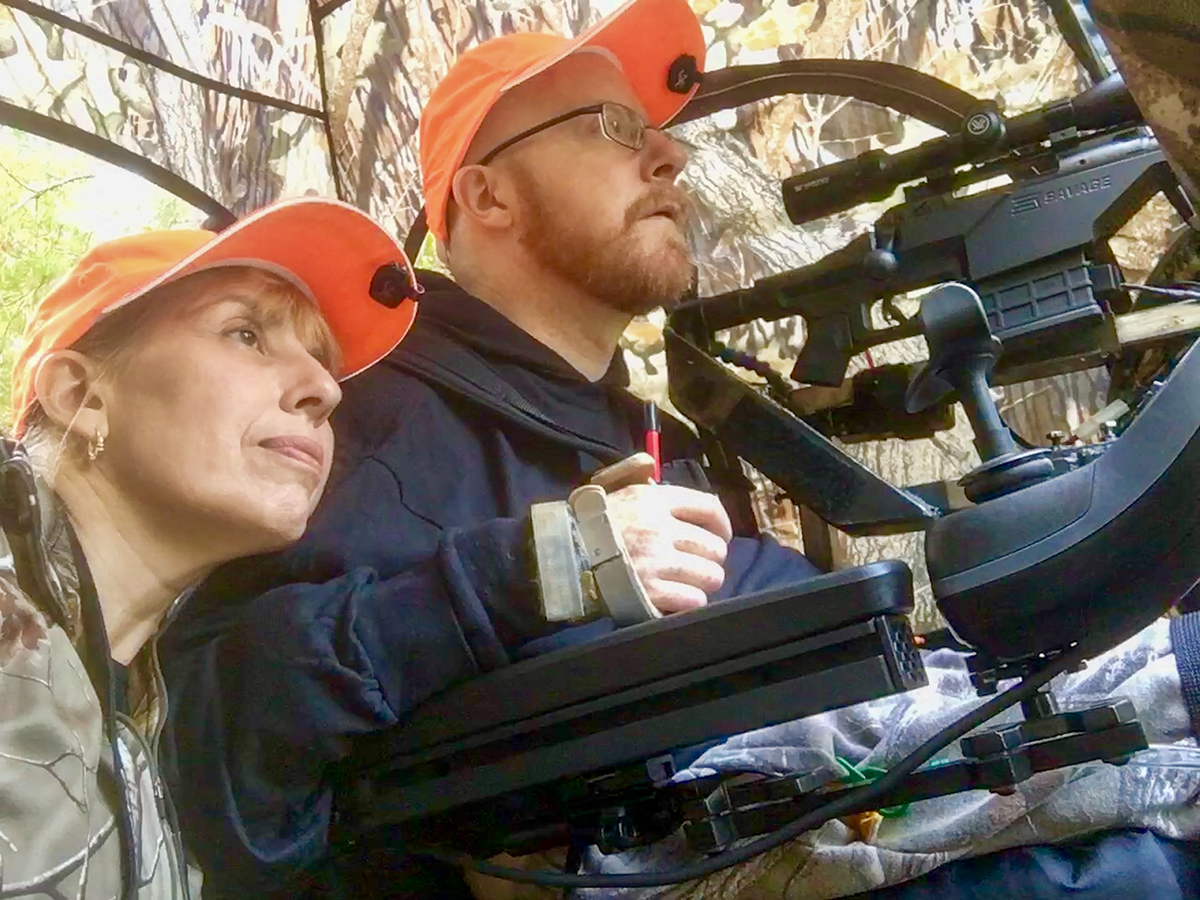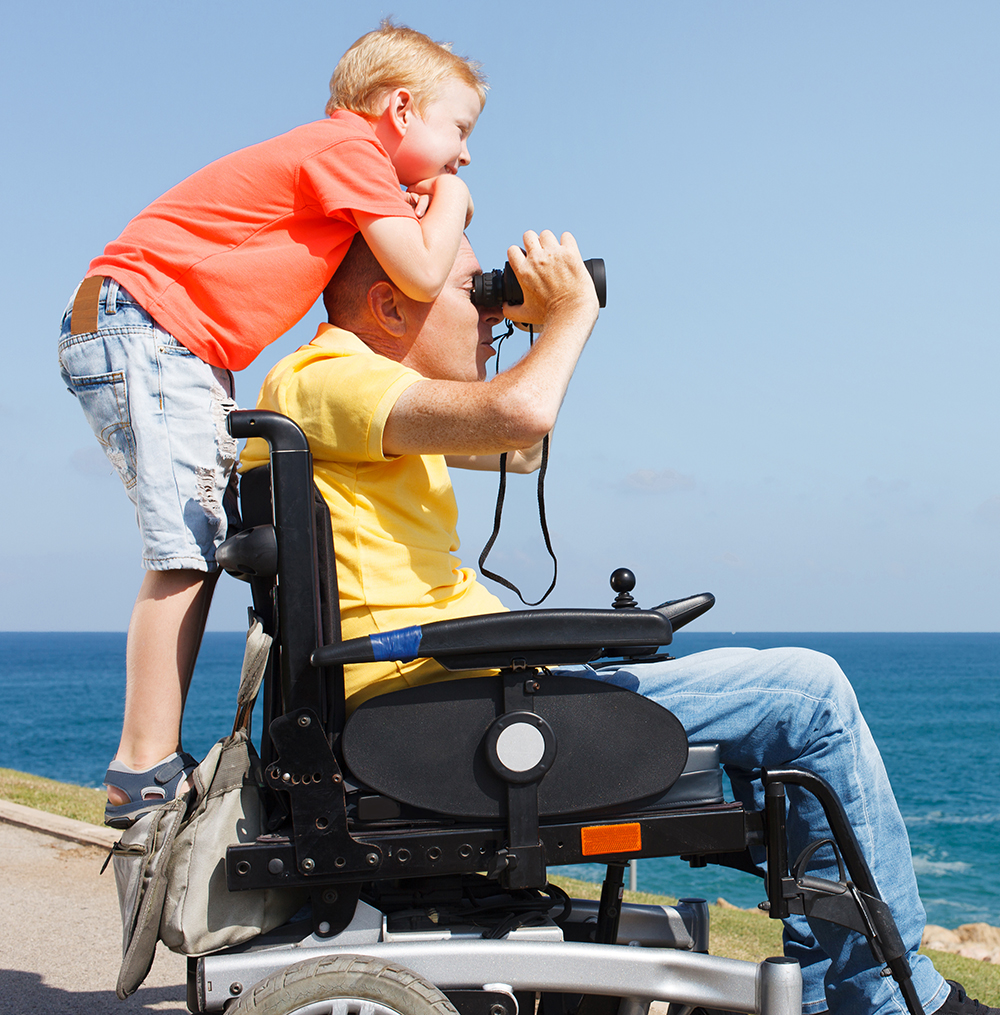 Summer is right around the corner and the COVID-19 pandemic means this year will be much different than any other we’ve had in our lifetimes. There may not be packed musical festivals or big beach holidays, but there will still be plenty to do with our own families. And, who knows, maybe we will also be able to patronize some of our favorite adaptive sports organizations before the leaves start to change.
Summer is right around the corner and the COVID-19 pandemic means this year will be much different than any other we’ve had in our lifetimes. There may not be packed musical festivals or big beach holidays, but there will still be plenty to do with our own families. And, who knows, maybe we will also be able to patronize some of our favorite adaptive sports organizations before the leaves start to change.
Handcycling on a Quiet Country Lane
Dr. Jon Porter, a T4 para, was in medical school when a friend of a friend gave him a handcycle. He and his wife, Kate, started cycling together after they were first married, and the couple made squeezing Jon’s bike into their small apartment a priority. Kate also bought a bike, and they spent weekends cruising on the Huntington Beach boardwalk and local trails in Upland, California.
When the Porters adopted two boys, now 3 and 5, cycling became a family affair, and safety is always a priority for the parents. Fortunately they live on a private country lane, so there’s lots of room for the boys to practice. “And now that our boys know how to ride without training wheels, it’s all they want to do,” says Kate. “They begged us to let them ride up and down our lane in the rain this morning, so we did!”
.
When the family tires of wheeling around their house, they visit one of the many well-maintained accessible trails near their home. And they even take their bikes with them on vacation. Last summer, they visited Lake Tahoe and rode the Truckee River Bike Trail. “It brings me a lot of joy to be able to ride alongside my family and go on adventures together,” says Jon. “It’s a great way to connect, have fun and exercise.”
“We are very blessed to have adopted two little boys that love riding as much as we do,” adds Kate. “We can foresee many future bike rides together as a family.”
Kayaking in the Pacific Northwest
With a blended family of five and a baby on the way, Dr. Brian Bowen and his wife, Brittney, rarely take it easy — especially in the warmer months. As soon as the weather cooperates, Brian, a T11 paraplegic, is outside playing tennis with Brittney and throwing footballs and baseballs in the backyard with their boys. The kids’ ages range from 11 to 22, and the family finds that kayaking offers an opportunity for everyone to get out and enjoy the same activity. “We have a lake nearby, which makes kayaking so much fun,” says Brittney. “After some trial and error, last year we decided to buy two sit-on-top kayaks because they make it easier for Brian to get his legs situated, and to get on and off.”
The family usually launches from a dock. Brian transfers from his chair onto the dock, then Brittney holds the kayak steady while he transfers onto it. They bring extra towels to lay down so Brian can avoid slivers and scratches.
Kayaking is special to Brian and Brittney’s relationship. “One of my favorite memories is of when Brian and I first went kayaking together,” says Brittney. “It was just the two of us. We packed a lunch, took a double kayak out on the river, and paddled around in the sun.” It was also one of the first activities the couple did together after his injury that didn’t need to be adapted. “It helped us remember that we can do pretty much anything we could before his injury.”
.
The Game Lands of Pennsylvania
There is no doubt that adaptive hunting is popular in the wheelchair community. Greg Traynor, a C4-5 quadriplegic, runs the popular Accessible Hunter Facebook page, which offers advice on how to get outdoors. The page started as a website in 2010 and now has over 5,000 followers. This year, he added an Accessible Hunter podcast.
Traynor says that disabled hunters become more comfortable with experience. “One of my taglines for my Accessible Hunter page is ‘no matter how you get there, get there,’” he says. “I hunt with a lot of people who have significant disabilities, and we just don’t think much about it anymore. We know how it works best and how to get out there.”
His father taught him how to bow hunt in Pennsylvania’s bountiful game lands when he was 15, and he credits Shepherd Center in Atlanta, Georgia, for his return to hunting after his 1999 spinal cord injury. “When they found out that I was a big bow hunter, they took me down to the gymnasium and introduced me to shooting again with adaptive equipment,” he says.
The Shepherd recreational therapy department used a BMF trigger activator — a lever that makes depressing the trigger easier — on a .22 rifle. Greg was inspired. “It was amazing. I learned that I could shoot again,” he says. Around 10 years later, Traynor started the original Accessible Hunter website and moved back to Pennsylvania to be closer to family. The move allowed him to spend time hunting with his brother and nephew, as well as other long-time hunting friends.
These days, Greg uses a mount designed by a welder friend that works on his rifle, shotgun and bow. He still uses the BMF on his shotgun, but uses a sip-and-puff trigger with his scoped rifle.
Traynor is especially happy that his 30-inch-wide outdoor wheelchair fits on his full-sized van’s lift. “I don’t have to trailer it, and when I travel to hunt, I can even take it inside the hotel rooms with me and charge the batteries like my regular everyday chair,” he says. Also, since it tilts and reclines, “I can stay in that chair all day and do my weight shifts.”
Traynor prefers to hunt the game lands in his area rather than travel far on adapted hunting trips. “Now, I mostly just hunt with friends and family,” he says.
What he enjoys most is the shared time in nature, far from life’s distractions. “For me, therapy happens outdoors.”
Active Family-Friendly Getaways
There are many organizations around the country that offer adaptive adventures for families. Here are a few opportunities in some iconic destinations:
Shake-A-Leg
Miami’s Shake-A-Leg welcomes families, friends and athletes with disabilities to learn how to sail, swim and kayak on the Biscayne Bay. “We offer sailing with families together. We do adaptive kayaking, rowing and fishing, but it doesn’t stop there. A person can register to borrow equipment,” says Karis Starkes, Shake-A-Leg’s watersports director. “We believe there’s magic out there in Biscayne Bay and we want to provide an opportunity to access that.” The center is open every day and most national holidays.
• shakealegmiami.org, 305/858-5550
Breckenridge Outdoor Education Center
During the summer, much of the focus of the talented staff at the BOEC is on the Heroic Military Families Wilderness Adventure, which brings adaptive activities to military veterans and their families. “We have a ropes course, rock climbing and maybe rafting on the Colorado River,” says Wilderness Program Coordinator Stephen Rubin. “You can clearly see the value. Being able to adapt and get back into the world after service is important. For example, the objective of the ropes course is to demonstrate reliance on other people, and working together. You can’t do it all by yourself.”
Eligible families and kids stay at the lodge in Breckenridge, Colorado, with access to fully accessible activities on 40 acres of land. “I think it’s one of our more valuable programs,” says Rubin.
• boec.org, 970/453-6422
Access Unlimited
Access Unlimited offers adapted fly fishing for free, with views of postcard-worthy beauty in Bozeman, Montana. It all started when Jesse Alberi sustained a spinal cord injury and his friends and family rallied to get him back on the water. With their expertise in adapting boat trips, the group began to add larger trips that included both wheelchair users and their family members. Now, it hosts about five big trips a year, and smaller two-day versions, that include stays in a lodge, Polaris rides, shoots and fishing. Craig Hospital in Denver is offering an adventure camp through Access Unlimited, as well.
• challengelimitation.org, 406/219-8629
** This post was originally published on https://www.newmobility.com/2020/05/family-fun-in-the-summer-time/

